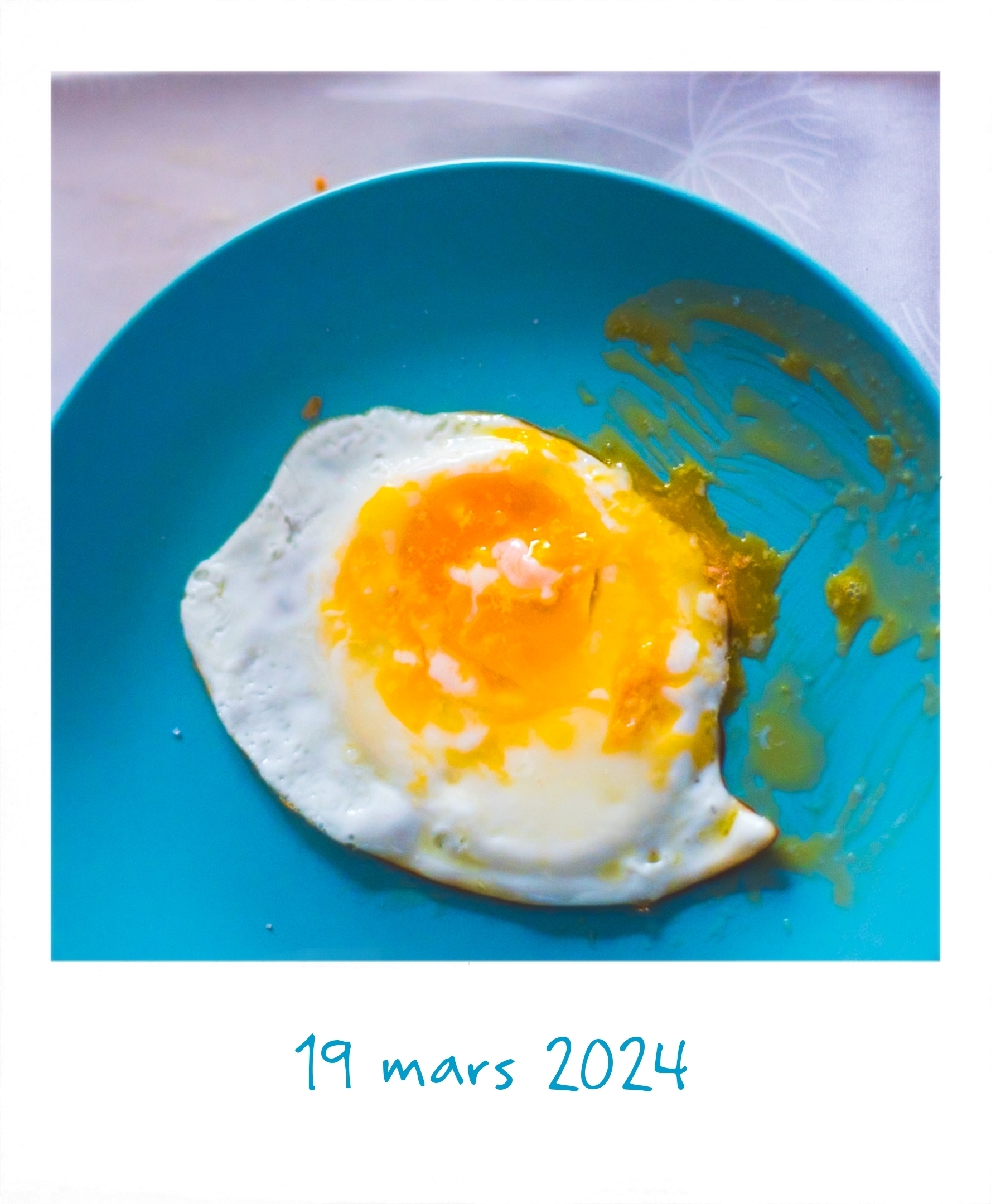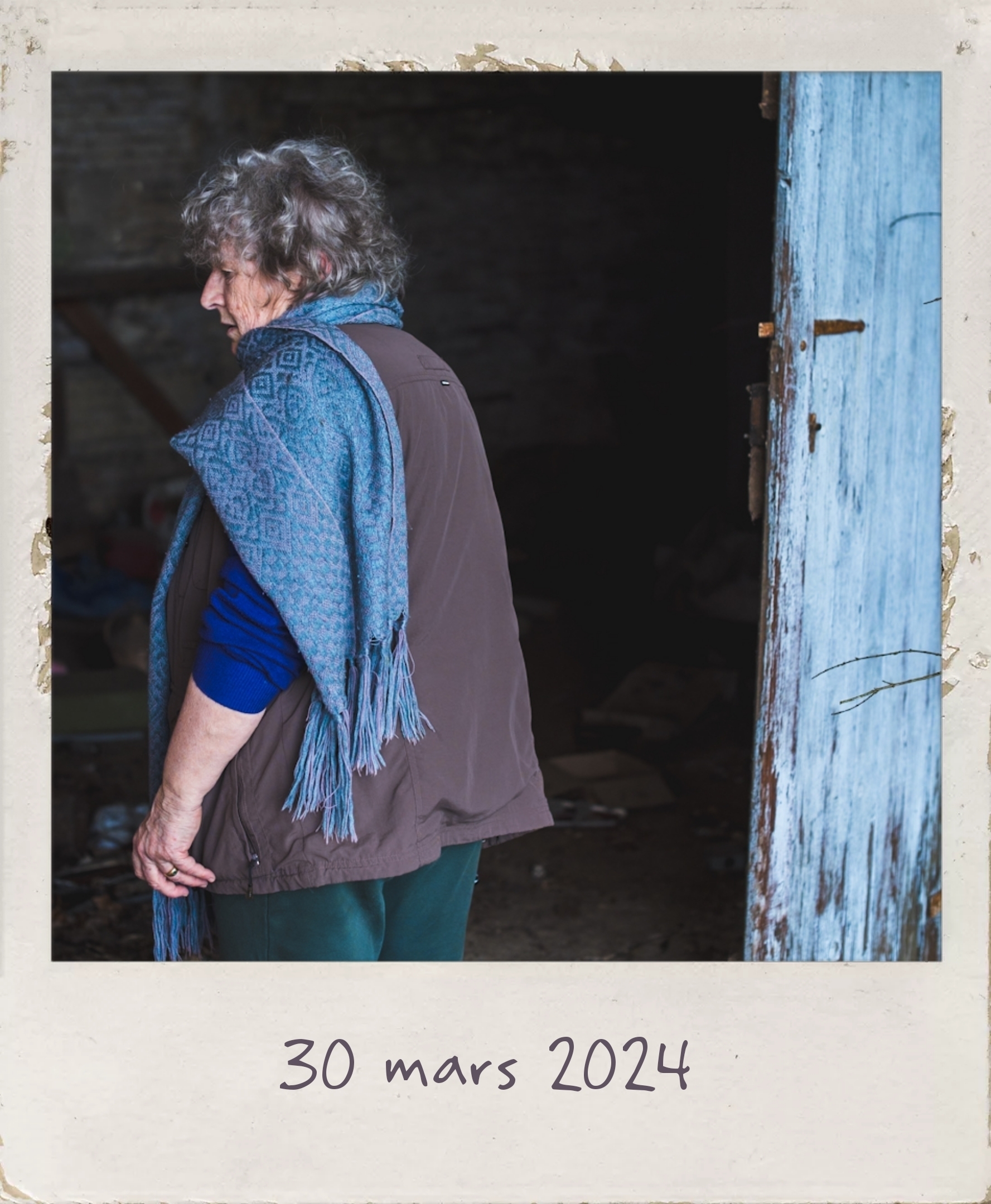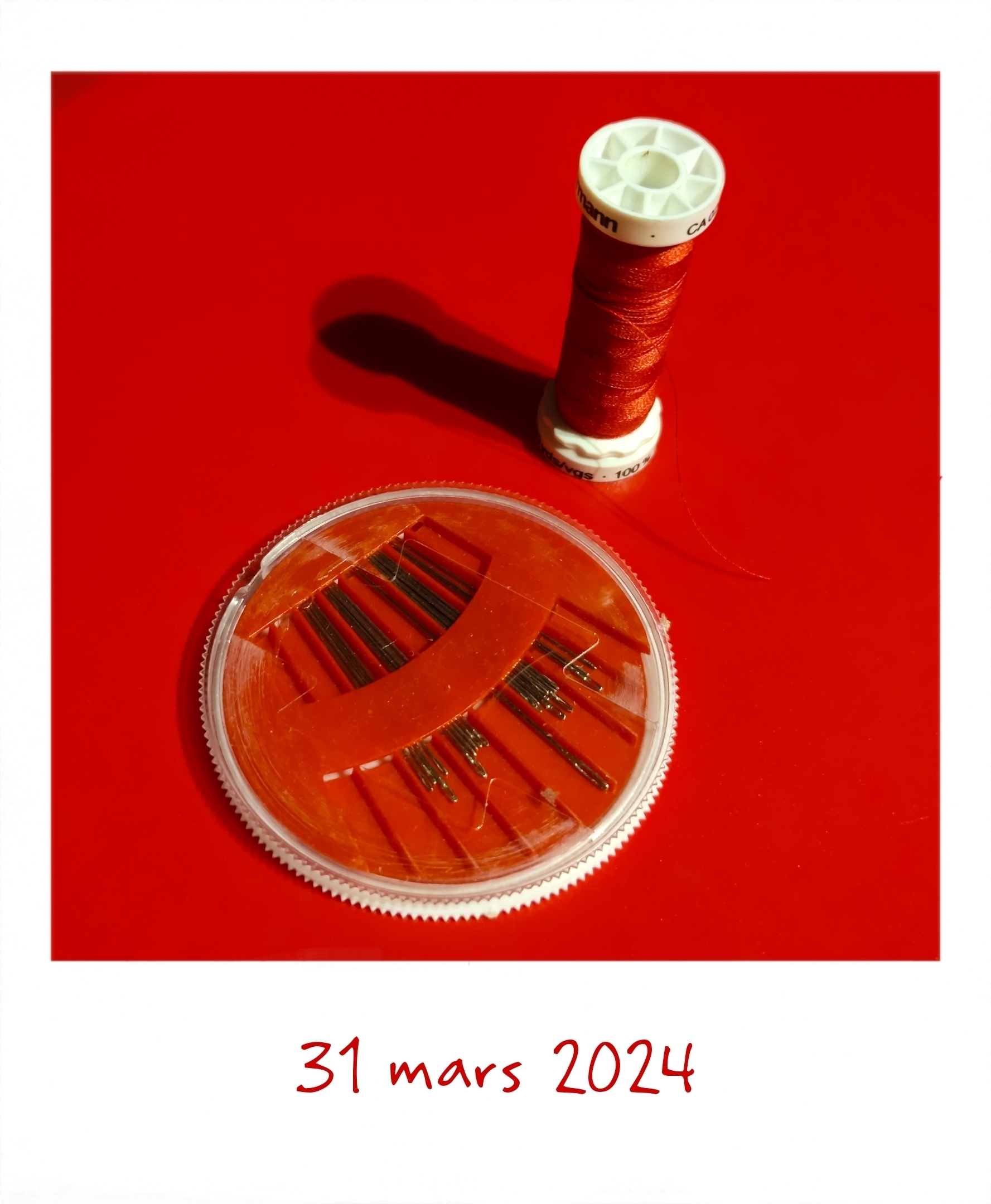Famous Groups on #Red-Electric-Serpent #music
#Sly-and-the-Family-Stone American band from San Francisco. The hit combination of Sly & the Stoners and Freddie & the Stone
https://www.youtube.com/watch?v=YUUhDoCx8zc
Sly & The Family Stone - #Everyday #People (Official #Video)
#everyday
5 Likes





Mon petit côté artiste 😉
J'ai eu envie de reprendre mon défi de faire une photo par jour. J'ai déjà eu deux grandes périodes de photos du jour, sur plusieurs mois à chaque fois.
Si vous connaissez mon travail vous en avez déjà vu sur les réseaux, sur les salons. Ce sont des formats carrés qui traitent du quotidien, tout ce que j'aime: les couleurs, le graphisme, ce qui est sous nos yeux et qu'on ne voit pas...
C'est une pratique qui me pousse à beaucoup de créativité car certains jours je suis juste dans ma voiture ou chez moi. Même si je ne poste pas la photo le jour même, il s'agit vraiment d'une photo prise le jour indiqué. Pas de monument ni de paysage grandiose ni de voyage au bout du monde ni de star internationale, et c'est tout le défi ! Retrouver l'extraordinaire dans l'ordinaire, le beau dans le quotidien, cultiver l'émerveillement permanent.
Certaines photos du jour vont si bien ensemble que j'en ai fait des triptyques. D'autres vont bien par deux aussi.
Là je vous poste celles des derniers jours, et oui, j'en ai loupé six... Il faut que mon cerveau coopère et n'oublie pas. Il y a 8 photos dans ce post.
Je prends ces photos avec mon téléphone aussi bien qu'avec mon reflex. Le téléphone est un outil du quotidien, c'est tout à fait pertinent pour ce projet. Je les édite sous forme polaroïd, symbole de l'instantané et du moment présent par excellence.
Suivez cet aspect de mon travail créatif sur mon compte Instagram "ma_photo_du_jour_".
#photo #photodujour #apictureaday #quotidien #everyday #daily #dailychallenge #pictureoftheday #femmephotographe #femmeartiste #womanphotographer #womanartist #art
3 Likes
4 Comments
1 Shares
One person like that
1 Shares
this is from a book entitled
“ #Catwatching” by #DesmondMorris:
The answer seems obvious enough. A purring cat is a contented cat. This surely must be true.
But it is not. Repeated observation has revealed that cats in great pain, injured, in labor,
and even dying often purr loud and long (this I have experienced several times). These can
hardly be called contented cats. It is true, of course, that contented cats do also purr, but
contentment is by no means the sole condition for purring. A more precise explanation,
which fits all cases, is that purring signals a friendly social mood, and it can be given as a
signal tp, say, a vet from an injured cat indicating the need for friendship, or as a
signal to an owner, saying thank you for friendshp given.
Purring first occurs when kittens are only a week old and its primary use is when they are
being suckled by their mother. It acts as a signal to her that all is well and that the milk
supply is successfully reaching its destination. She can lie there, listening to the grateful
purrs, and know without looking up that nothing has gone amiss. She in turn purrs to her
kittens as they feed, telling them that she too is in a relaxed, cooperative mood. The use
of purring among adult cats (and between adult cats and humans) is almost certainly
secondary and is derived from this primal parent-offspring context.
An important distinction between small cats, like our domestic species. and the big #cats,
like #lions and #tigers, is that the latter cannot purr properly. The tiger will greet you with a
friendly “one-way purr” – a sort of splutter – but it cannot produce the two-way purr of
the domestic cat, which makes its whirring noise not only with each outward breath
(like the tiger), but also with each inward breath. The exhalation-inhalation rhythm of
feline purring can be performed with the mouth firmly shut (or full of nipple), and may
be continued effortlessly for hours on end if the conditions are right. In this respect small
cats are one up on their giant relatives, but the big cats have another feature that
compensates for it – they can roar, which is something small cats can
never do."
Source: https://youtube.com/watch?v=xINbWN1UcKw
2 Likes
4 Likes
3 Likes
2 Likes
3 Likes
1 Comments
9 Likes
9 Comments
4 Likes
#Music on #Red-Electric-Serpent
Famous Groups on Red Electric Serpent
#Sly-and-the-Family-Stone American band from San Francisco. The hit combination of Sly & the Stoners and Freddie & the Stone
https://www.youtube.com/watch?v=YUUhDoCx8zc
Sly & The Family Stone - #Everyday #People (Official #Video)
2 Likes
https://www.bitchute.com/video/ExZHDbZmh1a5/
OUR #EVERYDAY #LIVES ~ #SCHUMANN #RESONANCE #POWER #72 HIGHER & HIGHER READY TO BLOW
Our Everyday Lives ~ Schumann Resonance Power 72 Higher & Higher Ready to Blow
3 Comments
the #death #cult strikes again
https://www.bitchute.com/video/Ifty4FxmHfej/
#everyday #murder as they steal away the whole earth
BIDEN BRIBERY SCHEME #Whistleblower Found #DEAD Before Being Able to TESTIFY
One person like that
5 Likes
GELİP YARDIM İSTEDİ! ( Saldırıya Uğrayan Kedi Kliniğe Geldi! ) KALDIRILAN VİDEO
CatAsks For Help! ( Enters Vet to Show His Wound )
He is actually calling for help ... but hesitates to come inside.. Well...
He's a very calm boy. ;)
https://youtu.be/AD6T2ev7wbo
http://redirect.invidious.io/AD6T2ev7wbo
2 Likes
1 Comments
#Music on #White-Self-existing-Mirror
#RasaDon 11/22/1968 #Birth #ArrestedDevelopment
https://www.youtube.com/watch?v=qR63UlpHUeM
#Arrested #Development - #Everyday #People (Official #Video HD)
One person like that
#Nanotechnology Used #in Over 2,000 #Food Items Goes Unlabeled Due to Weird FDA Loophole:
Source: https://youtube.com/watch?v=wlAi3KIeTN8
Nanotechnology Used in #Covid #poison darts, 2,000 #Foods Goes #Unlabeled
Extremely small #particles of various #compounds are being used as food #additives, with unknown effects
If you’re one of those people that can often be found in the food aisles of grocery stores reading labels and looking for ingredients you can’t pronounce and don’t want to eat, you’ve most likely noticed several ingredients that, unbeknownst to you, are made using nanotechnology—a process that converts silver, copper, gold, aluminum, silicon, carbon, and metal oxides, among other metals, into atom-sized particles that are one-billionth of a meter in size.
Commonly used nano-sized ingredients include #TitaniumDioxide, which may be the most well-known additive. Others, such as #silicon oxide, calcium carbonate, iron oxides and hydroxides, calcium silicate, tricalcium phosphates, and #synthetic #silicas, are only a few of the additives that may be in your pantry right now.
A New Ingredient
Nanotechnology has become widely used in food production and manufacturing since the #1990s, and its components are unimaginably small—one-hundredth the size of a strand of human hair. They make our food more colorful, brighter, creamier, or crunchier, and they keep it fresher for longer as well.
Nano-sized additives also make some of our medicines more effective.
Nanotechnology is used in the manufacturing of #everyday #products, such as electronics, food and food #packaging, #medicine, #toys, #clothing, #sunscreens, #cosmetics, #dietary #supplements, and #much #more.
While they can provide a myriad of benefits, these increasingly popular product enhancers come at a price, according to #consumer groups and #health experts—and that price is our health.
Health Implications
Because these particles are so small, studies have shown that they can breach the #blood-brain barrier. Researchers are already exploring this quality for drugs meant to treat neurological conditions. But when it comes to food, that’s not a feature anyone is asking for. These particles are also able to circulate throughout the body and get absorbed into the bloodstream and organs. They can #penetrate #cell #walls and potentially create #inflammation and #disease.
“They may pass through the #lining #of the #gut and enter the #bloodstream, which may trigger an inflammatory or immune response,” Harvard School of Public Health’s Georgios Pyrgiotakis told WebMD. “They may also build up in various parts of the body, including the #lungs, the #heart, and reproductive organs.”
In a July 2020 study, a group of researchers at the University of Massachusetts Amherst found that titanium dioxide, which is commonly added to #gum, #candy, #drinks, and #desserts, caused changes in the gut #microorganisms of two groups of mice.
Both were given doses of titanium oxide. One group was fed a low-fat diet and the other a high-fat diet. After further testing to isolate the titanium dioxide effect, both groups had inflamed colons, which can lead to abdominal pain and diarrhea. The obese mice had more pronounced symptoms.
Vaccine Technology
Nanotechnology is currently being used in two of the three #mRNA #COVID-19 vaccines being given in the United States today.
There’s a #ipid #nanoparticle coating surrounding the mRNA in the vaccines, which allows them to penetrate the cell’s wall.
“Lipid #nanoparticles are a vital component of the Pfizer/BioNTech and Moderna mRNA COVID-19 vaccines, playing a key role in protecting and transporting the mRNA effectively to the right place in cells,” stated the Chemical Abstracts Service, a division of the American Chemical Society.
“Of the many COVID-19 vaccines under development, the two vaccines that have shown the most promising results in preventing COVID-19 infection represent a new class of vaccine products: They are composed of messenger ribonucleic acid (mRNA) strands encapsulated in lipid nanoparticles (LNP).”
But scientists have continued to call for greater oversight of these substances by the Food and Drug Administration (FDA) because of their size. Because they easily cross the blood-brain barrier, they may damage it by altering the layer of cells that line the inner wall of blood vessels.
FDA Looks Closer
The FDA, the agency charged with overseeing these additives, has begun to weigh the health risks from nano-sized additives.
The agency currently classifies nanoparticles in food with the designation Generally Recognized as Safe (GRAS) if the manufacturer is already using the same ingredient in its larger, conventional form.
“The particle size distribution of a food substance may affect its ability to be absorbed by the body or to migrate from food packaging into food,” the FDA stated in a 2007 guidance document on nanotechnology in food.
“The FDA does not categorically judge all products nanomaterial or otherwise involving application of nanotechnology as intrinsically benign or harmful. The FDA is monitoring the evolving science and has a robust research agenda to help assess the safety and effectiveness of products using nanotechnology.”
In 2011, the FDA Nanotechnology Task Force was created to coordinate its efforts with research scientists in the United States and internationally. Its goals are to train staff in the latest science at state-of-the-art facilities and to encourage collaborative research projects.
“Production and application of nanoparticles in consumer products is at an all-time high due to the emerging field of nanotechnology,” the FDA stated in a 2017 Grand Rounds webcast. “Direct detection and quantification of trace levels of nanoparticles within consumer products is very challenging and problematic.”
Tiny Particles, Growing Problem
By 2020, the FDA reported that applications for the approval of products containing nanotechnology had skyrocketed in the previous 10 years. According to many experts in the United States, there are 1,900 to 2,500 food products that use nanotechnology.
In response to health concerns about these products, countries around the #world have taken steps to limit or #ban some or all nanotechnology in their food.
In 2010, #Canada #banned nanotechnology in #organic food production. Since 2011, the #EuropeanUnion has required all food to be #labeled if it contains #engineered #nanomaterials. In 2015, the bloc required additional testing to ensure health safety.
In 2018, the European Food Safety Commission was petitioned by a group of scientists within the agency to reject the food additive silicon dioxide as safe for consumption because of nanoparticles in it, until a particle size distribution could be confirmed.
Beginning Jan. 1, 2020, #France banned any foods containing #titanium #dioxide from entering the country.
In the United States, the FDA doesn’t require any products produced with nanoparticles to be labeled or banned, and its guidelines recommend oversight on a case-by-case basis. Research on the long-term effects of ingesting nanoparticles remains scant.
2 Likes
8 clips of the recent (first) launch of the most powerful rocket yet. Unmanned, to circle the moon. Apparently, if this works out, both the main (“SLS”) rocket system and the included “Orion” project will be given human-carrying certification. All that carefulness must be why they’re years late on this first try.
Each clip is doubled with a slo-mo of same, total is 13:05. No music added until the slo-mo part of the last POV (10:15+), tasteful and dramatic, description credits it to the channel owner.
I believe it is the channel owner (Tim Dodd?) who is dancing and hooting (on the left, well before the other peeps raise their arms) at his irl view in the real time clip of 4/8 (2:37+).
#Artemis1 Incredible Audio & Slow Motion 4K Compilation
150,655 views Nov 19, 2022
Everyday Astronaut
1.34M subscribers
“[[[HEADPHONES ON]]] Crank the volume on this incredible floating point audio from inside the pad and 3.5 miles [5.6 km] away from the most powerful rocket to ever launch from Kennedy #Space Center, SLS!!! 4K slow motion captured on ZCam's and BlackMagic 12K Ursa and Studio 4K's.
NASA launched the Orion spacecraft to a distant retrograde lunar orbit atop the Space Launch System (SLS) for its maiden launch known as #Artemis 1. Launched from Launch Complex 39B, at the Kennedy Space Center, in Florida, the Artemis I mission will certify both Orion and the SLS Block 1 rocket for crewed spaceflight.
Audio and Video brought to you by: NASA, Tim Dodd, Cooper Hime, Andrew Taylor and Ben Stineman from #Everyday #Astronaut & John Pisani and Andrew Keating from Cosmic Perspective
00:00 - Engine Startup [NASA Cam 808]
01:01 - Tight Shot Inside Pad 39B
01:59 - Looking Down Mobile Launch Tower
02:37 - Behind The Scenes Reactions
04:24 - Ursa 12K Tracking at 600mm [Realtime]
05:30 - ZCam E2-F6 Tracking at 800mm [Realtime]
08:34 - ZCam E2-F6 Tracking at 800mm [Slow-Mo]
10:19 - Booster Separation Slow Motion
https://youtube.com/watch?v=nUozQWAg0wE
One person like that










